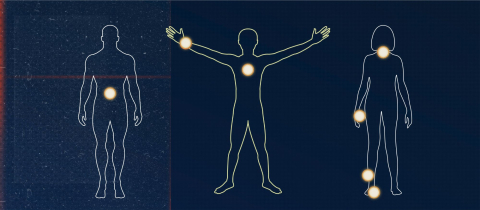The public mistrust of preservatives can be traced back to a 2004 paper by Dr. Philippa Darbre of the University of Reading.
Stories about recalls of various consumer products are all too common these days, but one about contaminated children’s sunscreen lotion caught my attention. Not because it posed a significant risk, which it didn’t, but because the report mentioned “glucono delta lactone.” This is a compound I worked with extensively back in my graduate school days, using it as a starting material for the synthesis of various carbohydrates. What was it doing now, in a story about a sunscreen recall?
Cosmetic products, particularly those that are water-based, are prone to contamination by bacteria, moulds and fungi. This is not only a “cosmetic” problem, as it were, it is also a health issue. One would therefore presume that the inclusion of preservatives to ensure a safe product would be seen by consumers as a positive feature, but such is not the case. Preservatives are regarded by many as nasty chemicals that are to be avoided.
This mistrust can be traced back to a 2004 paper by Dr. Philippa Darbre of the University of Reading that described finding traces of parabens, a commonly used class of preservatives, in breast tumours. The study received extensive press coverage, with few accounts pointing out that there had been no control group. Since parabens are widely used in foods and cosmetics, they can conceivably be detected in most everyone.
Although Darbre admitted that the presence of parabens did not prove they caused the tumours, she did alarm women by pointing out that these preservatives have estrogen-like activity and that such activity has been linked to breast cancer. What she failed to mention was that the estrogenic activity of the various parabens is thousands of times less than that of estrogenic substances found in foods such as soybeans, flax, alfalfa and chickpeas, or indeed of the estrogen produced naturally in the body.
Regulatory agencies around the world have essentially dismissed Darbre’s study and maintain that there is no evidence linking parabens to cancer. Dr. Darbre, undoubtedly disturbed by being rebuffed, has continued to publish research about parabens, attempting to justify her original insinuation of risk. Her latest paper describes the enhanced migration of human breast-cancer cells through a laboratory gel after 20 weeks of exposure to parabens. One is hard pressed to see the relevance of this “in vitro” experiment to the use of 0.8% parabens in a topically applied cosmetic.
Nevertheless, because of the concerns that have been raised about parabens and other synthetic preservatives, the cosmetics industry is turning toward the use of “natural” substances that have an unjustified public image of being safer.
As I have said many times before, the safety and efficacy of a chemical does not depend on whether it was made by a chemist in a lab, or by Mother Nature in a bush.
Its chemical and biological properties depend on its molecular structure and the only way to evaluate these is through appropriate experiments.
It is through such experiments that glucono delta lactone’s ability to impair the multiplication of microbes was determined. In solution, the compound slowly converts to gluconic acid, creating an inhospitable acidic environment for bacteria and fungi. Marketing-wise, glucono delta lactone can be labelled as “natural” because it can be found in honey and various fruits where it is formed from glucose by the action of enzymes released from the Aspergillus niger, a ubiquitous soil fungus that commonly taints plants.
Industrially, glucono delta lactone is produced by fermenting glucose derived from corn or rice with the same fungus. But acidification alone is not enough to eliminate the risk of microbial contamination, so the producers of the children’s sunscreen turned for help to that spicy mix of vegetables known as kimchee.
Korea’s national dish is traditionally made by fermenting cabbage, cucumber and radishes with the bacterium, Leuconostoc kimchii. One of the products secreted by the bacteria during the fermentation process is a peptide (a short chain of amino acids) that has antimicrobial properties.
“Leucidal Liquid” is a commercial extract of the antimicrobial peptide produced by the action of Leuconostoc kimchii on radishes. In combination with glucono delta lactone, it forms an effective preservative system; but as evidenced by the sunscreen recall, not in all cases. The lotions were free of contaminants before being shipped to retailers but some samples on the shelf were later found to contain bacteria and fungi that could have caused a problem if absorbed through cuts or lesions.
Contamination would most likely not have occurred if parabens, a far more effective preservative, had been used. But the label could then not have declared the product to be “natural.”
And here we have a curiosity.
Compounds in the parabens family actually do occur in nature. Methylparaben can be found in blueberries and interestingly, in the secretions of the female dog where it acts as a pheromone notifying the male that its advances are welcome. But since extracting parabens from berries or canine secretions is not commercially viable, the compounds are produced synthetically. This means that even though the final product is identical to that found in nature, it cannot legally be called “natural.”
A further issue, at least in the eyes of the chemically unsophisticated, is that benzene, the starting material for the synthesis, is derived from petroleum. Thanks to activist dogma, labelling any chemical these days as “petroleum-based” is tantamount to calling it toxic.
So far, no manufacturer has tried to counter this assault by describing petroleum as an organic substance formed through the natural decomposition of biological matter by soil-dwelling microbes, but similar seductive innuendo about “natural” ingredients is not uncommon in the cosmetics industry.
Phenoxyethanol is sometimes advertised as a natural alternative to parabens because it occurs in green tea, but in fact is commercially made from petroleum-derived phenol.
Some companies tout sodium hydroxymethylglycinate as a natural preservative, basing on the fact that it is made from glycine, an amino acid abundant in the human body. But glycine has to be put through a series of synthetic modifications to produce the preservative.
The demonization of synthetic preservatives has led not only to the glorification of less-effective natural products but to a host of “preservative-free” ones as well. These should only be trusted if they come in either single-use vials, or if the sterilized contents are sealed in a container with a pump that prevents entry of microbes when it is used.
Otherwise “preservative-free” can quickly become “bacteria-filled.”







